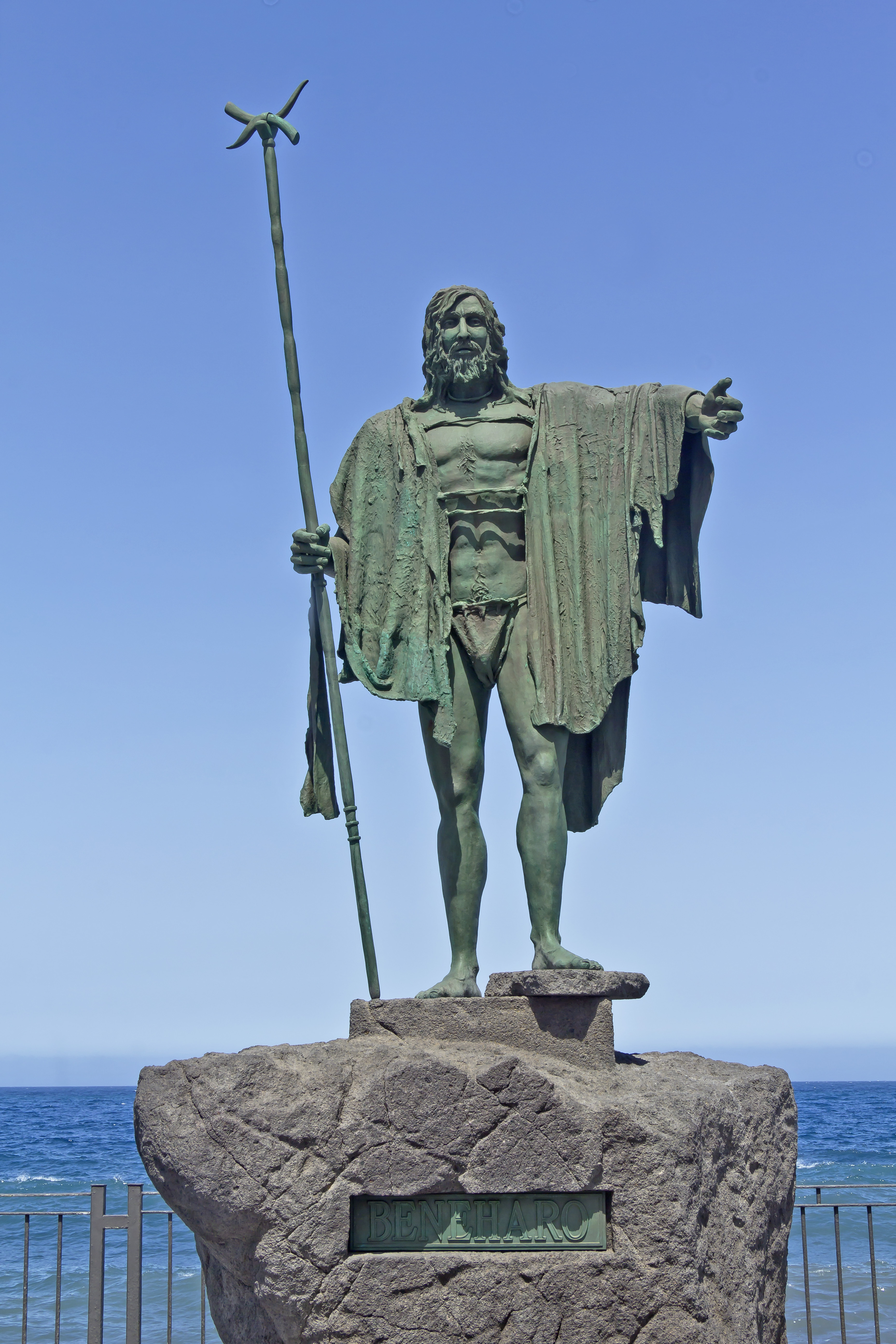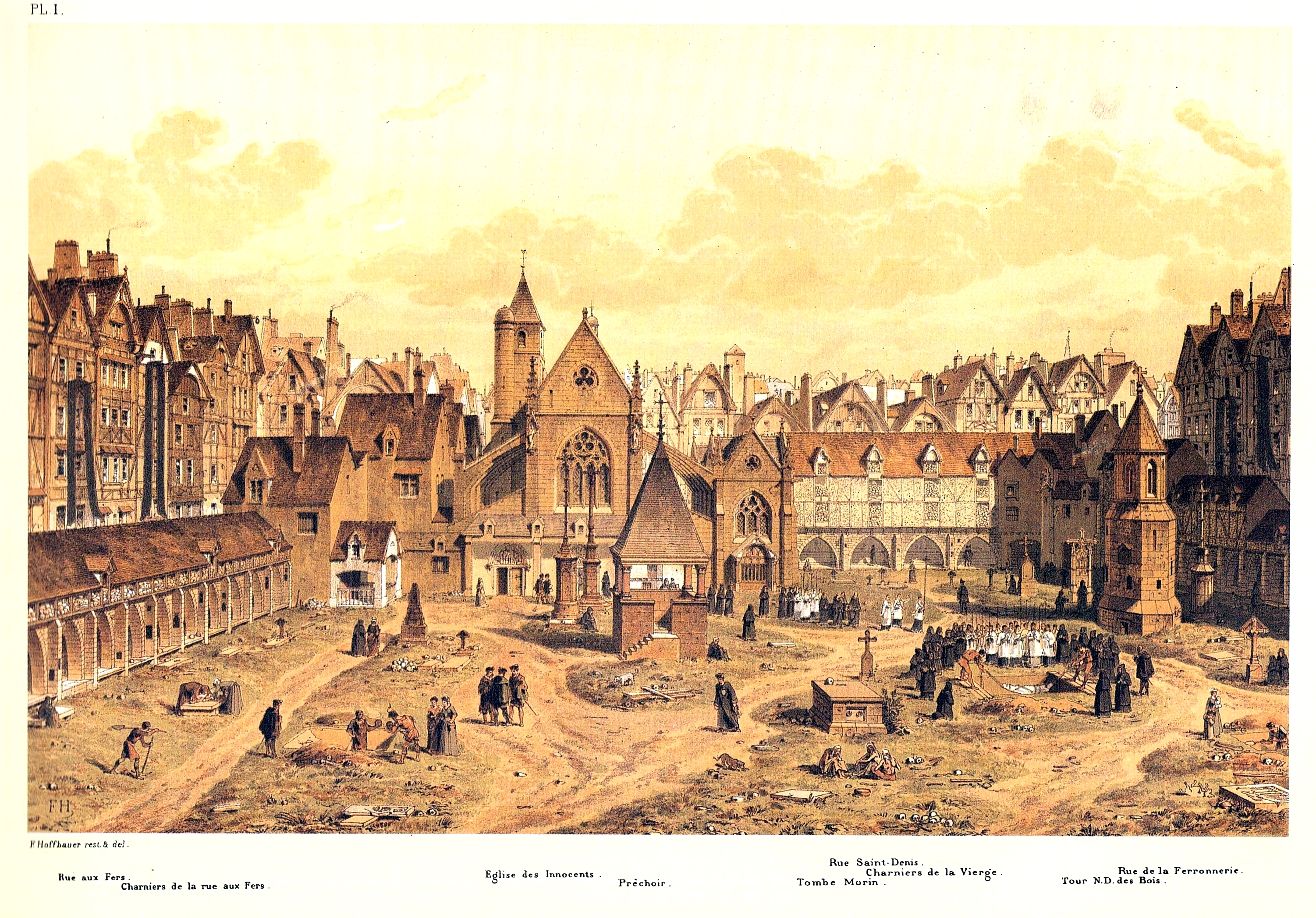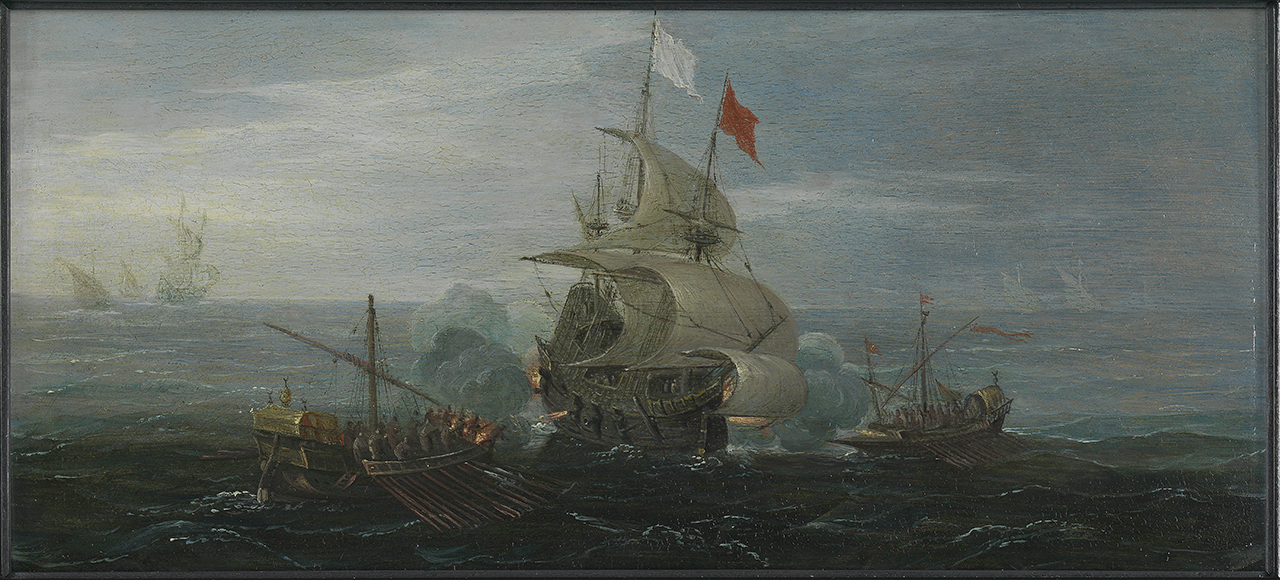|
San Andrés, Santa Cruz De Tenerife
San Andrés is a village located on the island of Tenerife in the Canary Islands (Spain). It is located on the coast, at the foot of the Anaga mountains, northeast of the capital city Santa Cruz de Tenerife. It is administratively part of the municipality of Santa Cruz de Tenerife. San Andrés is one of the oldest villages of Canary Islands, and was founded around 1498. Local names San Andrés (English translation ' Saint Andrew') has had numerous names throughout its history. The Guanches called the two valleys that make up San Andrés "Abicor" and "Ibaute", being current and valleys of Cercado de Las Huertas respectively. According to some scholars "Abicor" was associated with fig trees, while others are similar to African voices to refer to the hives. Already after the arrival of the Spaniards, the valley became known in the early years of the Higueras Valley (by the abundance of them), Valle de Las Higueras and Los Sauces, Valle de Salazar (by the owners dated to the area ... [...More Info...] [...Related Items...] OR: [Wikipedia] [Google] [Baidu] |
Unmanned Aerial Vehicle
An unmanned aerial vehicle (UAV) or unmanned aircraft system (UAS), commonly known as a drone, is an aircraft with no human pilot, crew, or passengers onboard, but rather is controlled remotely or is autonomous.De Gruyter Handbook of Drone Warfare; 2024. e-ISBN (PDF) 978-3-11-074203-9.H. Pan; M. Zahmatkesh; F. Rekabi-Bana; F. Arvin; J. HuT-STAR: Time-Optimal Swarm Trajectory Planning for Quadrotor Unmanned Aerial Vehicles IEEE Transactions on Intelligent Transportation Systems, 2025. UAVs were originally developed through the twentieth century for military missions too "dull, dirty or dangerous" for humans, and by the twenty-first, they had become essential assets to most militaries. As control technologies improved and costs fell, their use expanded to many non-military applications. These include aerial photography, area coverage,F. Rekabi-Bana; Hu, J.; T. Krajník; Arvin, F.,Unified Robust Path Planning and Optimal Trajectory Generation for Efficient 3D Area Coverage of ... [...More Info...] [...Related Items...] OR: [Wikipedia] [Google] [Baidu] |
Beneharo
Beneharo was a Guanches, Guanche king of Menceyato de Anaga on the island of Tenerife. Beneharo made peace in 1492 with Lope de Salazar, who had been sent by the governor of Gran Canaria Francisco Maldonado. After a slave raid shortly after against the Guanches of Anaga, the mencey withdrew its support to the Europeans although after the landing of Alonso Fernández de Lugo renewed the peace with the Castilians. A bronze statue of Beneharo is located in Candelaria, Tenerife, Candelaria with the other menceyes Guanches of Tenerife. References Notes * José Juan Acosta; Félix Rodríguez Lorenzo; Carmelo L. Quintero Padrón, ''Conquista y Colonización'' (Santa Cruz de Tenerife: Centro de la Cultura Popular Canaria, 1988), p. 51-2. *Batalla de Acentejo* {{in lang, es} External links Los guanches People from Tenerife Military personnel killed in action Guanche people Converts to Roman Catholicism from pagan religions ... [...More Info...] [...Related Items...] OR: [Wikipedia] [Google] [Baidu] |
Cemetery
A cemetery, burial ground, gravesite, graveyard, or a green space called a memorial park or memorial garden, is a place where the remains of many death, dead people are burial, buried or otherwise entombed. The word ''cemetery'' (from Greek language, Greek ) implies that the land is specifically designated as a burial ground and originally applied to the Ancient Rome, Roman catacombs. The term ''graveyard'' is often used interchangeably with cemetery, but a graveyard primarily refers to a burial ground within a churchyard. The intact or cremated remains of people may be interred in a grave, commonly referred to as burial, or in a tomb, an "above-ground grave" (resembling a sarcophagus), a mausoleum, a columbarium, a niche, or another edifice. In Western world, Western cultures, funeral ceremonies are often observed in cemeteries. These ceremonies or rites of passage differ according to culture, cultural practices and religion, religious beliefs. Modern cemeteries often inclu ... [...More Info...] [...Related Items...] OR: [Wikipedia] [Google] [Baidu] |
Playa De Las Teresitas
The Playa de Las Teresitas is an artificial, white sand, tourist beach located north of the village of San Andrés, Santa Cruz de Tenerife in Tenerife, Spain. Original beach Originally the area of the beach consisted mostly of stone and rocks, with a small strip of black sand. It was divided into three distinct parts that had different names: ''Tras la Arena'', closest to San Andrés; ''Los Moros'' in the middle; and finally the area bounded by the ravine of ''Las Teresas''. There was a private spa in the middle of the beach, and the area was also used for surfing. Above the beach were farms and orchards, growing bananas, mangoes, tomatoes and avocados, that provided the town with most of its income at the time. There is an important paleontological site of the Quaternary. It is a submarine reservoir in a submerged beach, approximately 400 square meters. It contains fossil mollusks, some endemic. Construction of the new beach In the 1950s, various beaches in the Santa Cruz ... [...More Info...] [...Related Items...] OR: [Wikipedia] [Google] [Baidu] |
Sahara
The Sahara (, ) is a desert spanning across North Africa. With an area of , it is the largest hot desert in the world and the list of deserts by area, third-largest desert overall, smaller only than the deserts of Antarctica and the northern Arctic. The name "Sahara" is derived from , a broken plural form of ( ), meaning "desert". The desert covers much of North Africa, excluding the fertile region on the Mediterranean Sea coast, the Atlas Mountains of the Maghreb, and the Nile, Nile Valley in Egypt and the Sudan. It stretches from the Red Sea in the east and the Mediterranean in the north to the Atlantic Ocean in the west, where the landscape gradually changes from desert to coastal plains. To the south it is bounded by the Sahel, a belt of Tropical and subtropical grasslands, savannas, and shrublands, semi-arid tropical savanna around the Niger River valley and the Sudan (region), Sudan region of sub-Saharan Africa. The Sahara can be divided into several regions, including ... [...More Info...] [...Related Items...] OR: [Wikipedia] [Google] [Baidu] |
Franco Regime
Francoist Spain (), also known as the Francoist dictatorship (), or Nationalist Spain () was the period of Spanish history between 1936 and 1975, when Francisco Franco ruled Spain after the Spanish Civil War with the title . After his death in 1975, Spain transitioned into a democracy. During Franco's rule, Spain was officially known as the Spanish State (). The informal term "Fascist Spain" is also used, especially before and during World War II. During its existence, the nature of the regime evolved and changed. Months after the start of the Civil War in July 1936, Franco emerged as the dominant rebel military leader and he was proclaimed head of state on 1 October 1936, ruling a dictatorship over the territory which was controlled by the Nationalist faction. The 1937 Unification Decree, which merged all of the parties which supported the rebel side, led to Nationalist Spain becoming a single-party regime under the FET y de las JONS. The end of the Civil War in 1939 brou ... [...More Info...] [...Related Items...] OR: [Wikipedia] [Google] [Baidu] |
Horatio Nelson
Horatio Nelson, 1st Viscount Nelson, 1st Duke of Bronte ( – 21 October 1805) was a Royal Navy officer whose leadership, grasp of strategy and unconventional tactics brought about a number of decisive British naval victories during the French Revolutionary and Napoleonic Wars. He is widely regarded as one of the greatest naval commanders in history. Nelson was born into a moderately prosperous Norfolk family and joined the navy through the influence of his uncle, Maurice Suckling, a high-ranking naval officer. Nelson rose rapidly through the ranks and served with leading naval commanders of the period before obtaining his own command at the age of 20, in 1778. He developed a reputation for personal valour and a firm grasp of tactics, but suffered periods of illness and unemployment after the end of the American War of Independence. The outbreak of the French Revolutionary Wars allowed Nelson to return to service, where he was particularly active in the Mediterranean Sea. He fou ... [...More Info...] [...Related Items...] OR: [Wikipedia] [Google] [Baidu] |
Pirate Haven
Pirate havens or Pirate coves are ports or harbors that are a safe place for pirates to repair their vessels, resupply, recruit, spend their plunder, avoid capture, and/or lie in wait for merchant ships to pass by. The areas have governments that are unable or unwilling to enforce Admiralty law, maritime laws. This creates favorable conditions for piracy. Pirate havens were places where pirates could find shelter, protection, support, and trade. These havens were often near maritime shipping lanes. Although some havens were merely hidden coves, some were established by governments who employed privateers to disrupt the overseas trade of rival nations. Some of the most famous island strongholds included Tortuga (Haiti), Tortuga in the Caribbean, Madagascar in the Indian Ocean, and the Sulu Archipelago in the Sulu Sea. Some historic pirate havens included Barataria Bay, Port Royal, and Tortuga (Haiti), Tortuga. These provided some autonomy for privateers and buccaneers. Impact Pira ... [...More Info...] [...Related Items...] OR: [Wikipedia] [Google] [Baidu] |
Pirate
Piracy is an act of robbery or criminal violence by ship or boat-borne attackers upon another ship or a coastal area, typically with the goal of stealing cargo and valuable goods, or taking hostages. Those who conduct acts of piracy are called pirates, and vessels used for piracy are called pirate ships. The earliest documented instances of piracy were in the 14th century BC, when the Sea Peoples, a group of ocean raiders, attacked the ships of the Aegean and Mediterranean civilisations. Narrow channels which funnel shipping into predictable routes have long created opportunities for piracy, as well as for privateering and commerce raiding. Historic examples of such areas include the waters of Gibraltar, the Strait of Malacca, Madagascar, the Gulf of Aden, and the English Channel, whose geographic structures facilitated pirate attacks. The term ''piracy'' generally refers to maritime piracy, although the term has been generalized to refer to acts committed on land, in th ... [...More Info...] [...Related Items...] OR: [Wikipedia] [Google] [Baidu] |
Castle Of San Andrés
A castle is a type of fortified structure built during the Middle Ages In the history of Europe, the Middle Ages or medieval period lasted approximately from the 5th to the late 15th centuries, similarly to the post-classical period of global history. It began with the fall of the Western Roman Empire and ... predominantly by the nobility or royalty and by Military order (monastic society), military orders. Scholars usually consider a ''castle'' to be the private fortified house, fortified residence of a lord or noble. This is distinct from a mansion, palace, and villa, whose main purpose was exclusively for ''pleasance'' and are not primarily fortresses but may be fortified. Use of the term has varied over time and, sometimes, has also been applied to structures such as hill forts and 19th- and 20th-century homes built to resemble castles. Over the Middle Ages, when genuine castles were built, they took on a great many forms with many different features, although ... [...More Info...] [...Related Items...] OR: [Wikipedia] [Google] [Baidu] |
Iglesia De San Andrés (Tenerife)
Iglesia may refer to: * Iglesia, the Spanish form of church * Iglesia Department * Iglesia ni Cristo * Iglesia Filipina Independiente The Philippine Independent Church (; ), officially referred to by its Philippine Spanish name (IFI) and colloquially called the Aglipayan Church, is an Independent Catholic, independent catholic Christian denomination, in the form of a Religi ... * Iglesia (Metro Madrid), a station on Line 1 {{disambiguation ... [...More Info...] [...Related Items...] OR: [Wikipedia] [Google] [Baidu] |








